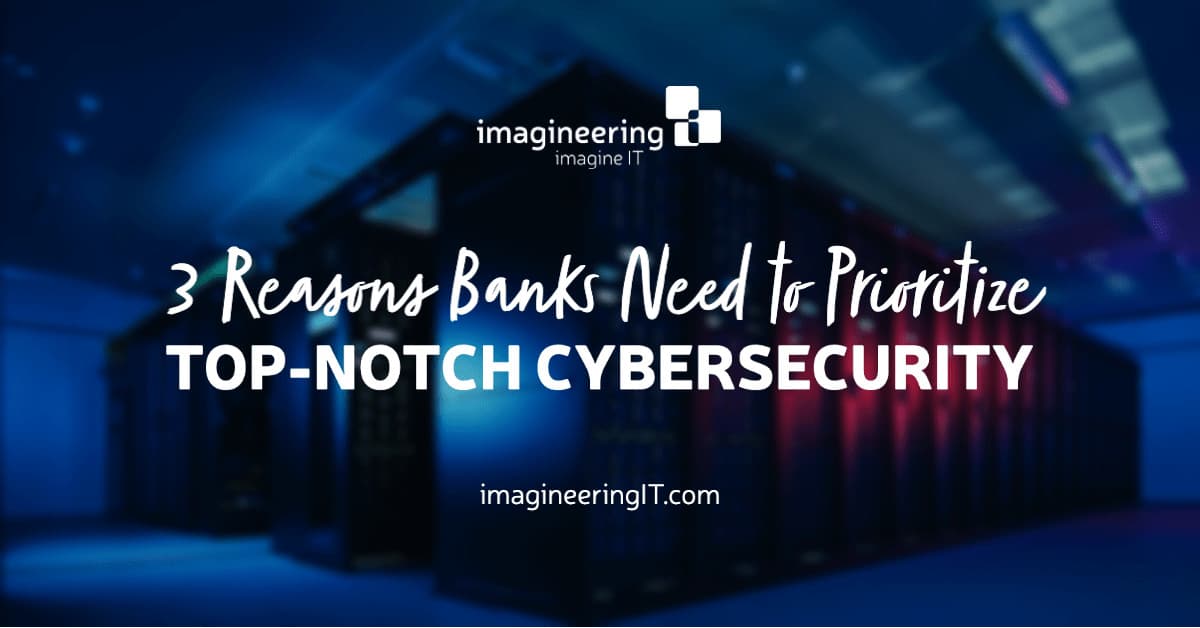As a bank or financial institution, you know how imperative it is to mitigate cybersecurity threats while providing your customers with convenient and innovative technology options for banking.
With many moving parts to consider, Imagineering has put together 3 things that banks and financial institutions should prioritize when adapting to the modern and evolving world of technology.
1. Keep Auditors Happy
Rules and regulations are in place for customer protection. If these are broken or bypassed, not only do banks face non-compliance penalties, it can also make customers question their bank’s integrity.
Regular cybersecurity audits are recommended to search for missing security regulations, outdated systems, or bugs that will help uncover vulnerabilities. Audits can also determine if your network is lagging or slow and will inform you of what aspects need to be updated.
Minor vulnerabilities are often the gateway to larger-scale cyberattacks. After an audit, take the time to make the changes — whether it’s getting a new firewall, introducing a new software, or updating your cybersecurity strategy.
2. Put Customers First
Reputation is everything for a bank. Cybersecurity systems need to be put in place to protect your network and more importantly, your customers’ personal information. Once a customer’s information has been stolen or breached, it can be hard to revert, as cybercriminals quickly work to sell the information on the dark web.
According to Security Magazine, 80% of customers will stop using a business if their information is compromised. 85% of those individuals will tell others about their negative experience.
Because customers want to access their accounts from wherever they are, creating a secure mobile app and website is the first step in securing their experiences. With so many customers logging in every day, banks need to put an emphasis on continuous security monitoring for their cybersecurity strategy.
3. Work Remotely, Securely
Your business is only as strong as your weakest link. Teaching employees about potential threats and vulnerabilities is the first step to preventing them. Especially when remote work is on the rise, it is important to put cybersecurity policies in place for all employees, whether in the office or working remotely.
First, access data and customer information only by a secure connection. Ensuring this is done securely and from only company-issued devices and with a VPN is key. Second, educate employees on which cyber threat tactics they should be looking for, as well as what to do in case of a breach. Third, teach employees how to properly secure private customer data.
In order to protect your bank’s reputation and customer data, focus on finding a cybersecurity partner that easily fits into your business model and aligns with your goals. The need for a strong relationship with an IT vendor is one of the most important things banks could benefit from.
While banks are typically staffed with IT professionals, outsourcing some of the IT needs to a reputable company will allow your IT staff to focus on the big picture items, while the IT vendor can focus on the day-to-day tasks.
Want to learn more? Download our checklist of 7 things banks need for a complete cybersecurity strategy.
7 Things Banks Need for a
Complete Cybersecurity Strategy








